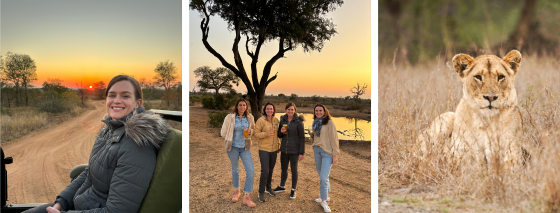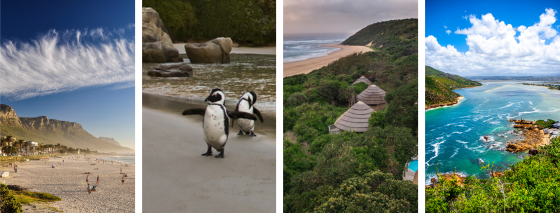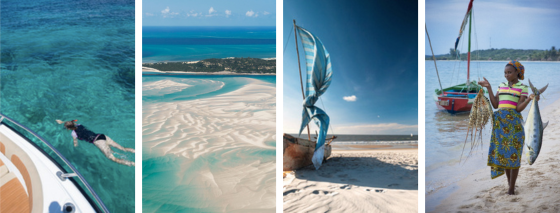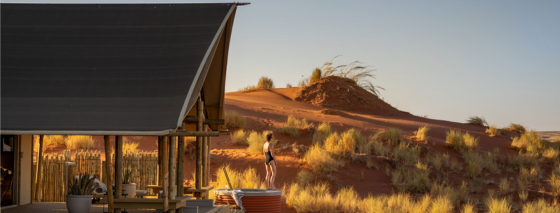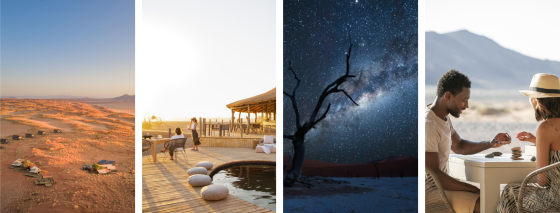7 Thrilling and Luxurious Honeymoon Activities in Southern Africa
A luxurious honeymoon in Africa offers more than just exotic cuisine and fine wine in beautiful settings. Africa’s richness spans incredible wildlife, vibrant cultures, and landscapes and beaches that beckon. From unwinding with gourmet meals and cultural experiences to embarking on thrilling adventures, a honeymoon in Africa can be as tranquil or exhilarating as you desire.
Imagine coming face to face with a family of mountain gorillas and feeling an extraordinary connection as you observe them in their natural habitat. Picture yourself tracking cheetah on foot or snorkelling with whale sharks in warm, tropical waters. Beyond wildlife, the possibilities for honeymoon adventures under the African sun are endless. Try skydiving and sidecar trips or ocean escapades, hot-air balloon rides, and bungee jumping.
Here are seven activities that range from gentle excitement to adrenaline-fuelled adventure, ensuring unforgettable memories on your African honeymoon.
1. Zip lining
Cape Canopy Tours, situated in the Hottentots Holland Nature Reserve near Cape Town, provides a wonderful half-day out in nature. You’ll zip between mountain peaks, where eagles soar, in a spectacularly beautiful setting. Cape fynbos clings to the mountainside and the sound of the river below carries through the canyon. It’s a wonderful way to enjoy the mountain together.
Safety tip: Helmet, gloves and harnesses are all provided, all you need to do is follow the instructor’s safety guidelines.

2. Snorkelling with whale sharks
Slipping off the side of the boat into the warm Indian Ocean with your partner and seeing the spotted back of a whale shark shimmering in the sunlight can fill you with a sense of awe and wonder. Their colossal, yet graceful, bodies move with calm purpose and they exude an air of tranquillity.
There are various places off the coast of Africa where you could encounter these gentle filter-feeders. These include Tofo or the Bazaruto Archipelago in Mozambique, Nosy Be island off the coast of Madagascar and Mafia Island (about a 30-minute flight south of Zanzibar), off the coast of Tanzania.
Safety tip: Stay close to your guide and avoid touching the whale sharks.
3. Walking safari
What we love about walking safaris is the immersive experience in nature, feeling the ground under your boots, noticing a bird as it flits from tree to tree and watching and listening carefully to everything in your surroundings. You feel at one with nature, as your guide leads you to what could possibly be an extraordinary experience. You’ll leave with a sense of wonder and gratitude for having an experience of this kind in the wild.
Safety tips:
- Walk in a single file behind your armed tracker.
- Keep quiet so that the tracker can listen to the surrounding sounds (and so you don’t carelessly frighten away animals).
- Always go with experienced guides, who are familiar with the area and its animals and follow the instructions your guide shares with you.

4. Helicopter flight over Victoria Falls
Imagine soaring high above one of the world’s most breathtaking natural wonders, as a helicopter whisks you away on an unforgettable aerial adventure over Victoria Falls, which separates Zimbabwe and Zambia. From this unrivalled vantage point you’ll witness the beauty of the cascading waters that stretch nearly two kilometres wide. As the helicopter cuts through the air, you may catch a glimpse of rainbow-hued mist beneath. It’s an intimate and wondrous experience that can leave you and your partner feeling like National Geographic adventurers.
Safety tip: Wear your seatbelt and the headset that’s provided. Helicopters are noisy, so to be able to communicate with your pilot and fellow passengers you’ll need to have your headset on.
5. Shark cage diving
While shark cage diving can sound scary, if you keep your body inside the cage you’re quite safe. South Africa’s sharks have been featured on many documentary programmes and there are a number of operators near Cape Town as well as in Mossel Bay and Algoa Bay.
This thrilling experience will see you kit up with wetsuits and head out on the boat into deeper water. From Gansbaai you’ll head towards the underwater channel known as ‘Shark Alley,’ a stretch of water between Dyer Island and Geyser Rock, home to massive colonies of Cape fur seals. Similarly in False Bay you’ll head towards Seal Island where there’s a greater chance of encountering sharks.
While this isn’t everyone’s idea of a romantic outing, you and your new husband, or wife, will have plenty of exciting stories to recount.
Safety tip: Keep your body parts within the cage at all times and follow the instructions of the professionals on board.
6. Hot-air balloon flight
For those that don’t need that level of adventure, a hot-air balloon ride is an incredibly romantic and less adrenaline-fuelled way of taking in the world from above.The perfect honeymoon adventure. Whether you chose to drift serenely over the towering dunes of Sossusvlei, in Namibia, or the vast plains of the Serengeti during the Great Migration it’ll be an experience to remember.
You’ll lift off at sunrise and float gently, gaining altitude above the land as it awakes. Watch as the rising sun casts a golden glow over red dunes or illuminates the spectacle of wildebeest and zebra herds below. This is a unique and intimate perspective that few get to experience.
Safety tips:
- Pay attention to the pilot’s safety briefing and explanation on the proper procedures for boarding and landing.
- Keep your arms and hands inside the basket at all times and avoid leaning over the edge.

7. Gorilla trekking
Whether you choose to trek to see mountain gorillas in the Bwindi Impenetrable Forest National Park, Uganda; Volcanoes National Park, Rwanda or seek an encounter with western lowland gorillas in Odzala National Park in the Congo it’ll be an experience that will stay with you indefinitely.
Once you’ve found a gorilla family, you’ll have up to an hour to spend watching the gorillas interact, play, and forage among the dense foliage. It’s awe-inspiring to be in the presence of an imposing silverback watching protectively over his family. Seeing fluffy black baby gorillas tumble and play, or cling to their mothers as they stare at you in curiosity, is also something you’ll never forget.
Safety tip: Maintain a 7-metre distance and avoid direct eye contact to prevent stressing them.
Leopard’s founder and director Diana Granoux had this to say about her encounter with gorillas, “What makes the experience so unique is that you are transported to another world as you become part of the gorilla family for a short time. You are there on their terms. They can always choose to walk away, and they walk MUCH faster through the forest than humans can. I think a gorilla trek is the perfect compliment to a traditional African safari where you will see our other iconic fauna – lion, elephant, leopard, rhino – but always from behind a physical barrier because these animals are just too dangerous to get close to on foot. I cannot find the right words to describe the experience of seeing the gorillas in such close proximity, except perhaps awe-inspiring.” You can read her full account here.
Happy travelling,
The Leopard Team
P.S. Whatever your tolerance for excitement is, we always recommend skilled tour operators with exemplary safety track records.
Sign up for more newsletters like this here: https://mailchi.mp/2e4afa50d15f/leopard






